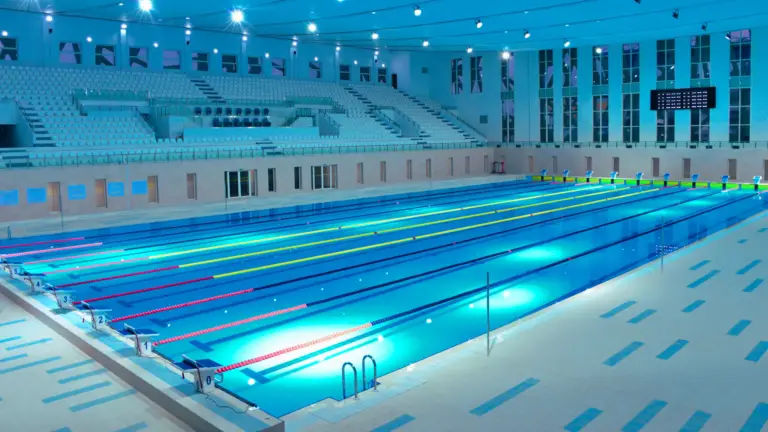Hello fellow moms and moms-to-be! Pregnancy is a beautiful journey filled with joy, anticipation, and of course, a fair share of challenges. One of the best ways to navigate these challenges is by staying active. Today, I want to talk about one of my favorite forms of exercise during pregnancy – swimming.
Let’s dive in and explore the benefits of swimming while pregnant and provide some helpful tips along the way.
Is it Safe to Swim While Pregnant?
The short answer is yes. Swimming is generally considered a safe form of exercise during pregnancy. The buoyancy of the water supports your body, reducing the strain on your joints and muscles.
However, it’s important to remember that every pregnancy is unique. Before you start any exercise regimen, including swimming, it’s crucial to consult with your healthcare provider. They can provide personalized advice based on your health history and current condition.
Benefits of Swimming During Pregnancy
Swimming during pregnancy offers a host of benefits. Here are a few key ones:
Low-impact Exercise
Swimming is a gentle form of exercise that’s easy on your joints and reduces strain on your body. This is especially beneficial during pregnancy when your body is already working overtime to support your growing baby. Plus, the buoyancy of the water makes you feel lighter, which can be a welcome relief, especially in the later stages of pregnancy.
Improved Cardiovascular Health
Swimming gets your heart rate up, which improves cardiovascular fitness. This is great for both you and your baby. Regular cardiovascular exercise can help reduce the risk of gestational diabetes and can lead to shorter, easier labor. It’s a win-win!
Muscle Toning and Strength
Swimming engages a wide range of muscle groups, helping to tone and strengthen your body. It’s a full-body workout that can help you stay strong and fit during pregnancy. Plus, stronger muscles and a toned body can help you better handle the physical demands of pregnancy and childbirth.
Reduced Swelling and Discomfort
The buoyancy of the water relieves pressure on your joints and can help reduce swelling, a common discomfort during pregnancy. Plus, the gentle resistance of the water can help alleviate pregnancy-related aches and pains. It’s like a workout and a massage all in one!
Enhanced Relaxation and Stress Relief
There’s something incredibly calming about being in the water. Swimming can help reduce stress and promote a sense of well-being, which is so important during pregnancy. Plus, taking some time for yourself to swim can be a great way to relax and unwind.
Improved Sleep Quality
Regular swimming can help improve your sleep patterns during pregnancy. Exercise like swimming can help you fall asleep faster and sleep more soundly. And we all know how precious good sleep is, especially when you’re pregnant!
Pelvic Floor Engagement
Swimming involves the use of multiple muscle groups, including the pelvic floor muscles. These muscles play a crucial role in supporting the pelvic organs and facilitating childbirth. Regular swimming can help strengthen the pelvic floor muscles, which may aid in the progress of labor.
Safety Considerations for Swimming During Pregnancy
Consultation with Healthcare Provider
Before you jump in the pool, it’s important to check with your healthcare provider. They can provide personalized advice based on your health history and current condition. Remember, every pregnancy is unique, and what works for one person may not work for another.
Water Temperature and Hydration
When swimming during pregnancy, it’s important to ensure the water isn’t too hot. Aim for a water temperature that’s comfortable but not hot. Also, remember to stay hydrated. Even though you’re in the water, you can still get dehydrated.
Pool Hygiene and Safety
Choose clean and well-maintained swimming pools. Avoid pools that are overly chlorinated or have a strong chemical smell. Also, be mindful of safety. Use handrails when entering and exiting the pool, and avoid slippery surfaces to prevent falls.
Listening to Your Body
This is perhaps the most important tip. Pay attention to how you feel during and after swimming. If you experience any discomfort, dizziness, or shortness of breath, it’s important to stop and rest. Remember, it’s not about how many laps you can swim, but about staying active and feeling good.
Swimming in Different Trimesters
Swimming can be beneficial throughout all stages of pregnancy, but there are certain considerations to keep in mind for each trimester.
First Trimester
During the first trimester, you may experience fatigue and morning sickness. Swimming can help alleviate these symptoms by boosting your energy levels and promoting relaxation. However, it’s important to listen to your body and not overexert yourself. Start with short, gentle swims and gradually increase your time in the water as your comfort and energy levels allow.
Second Trimester
As your baby bump grows during the second trimester, you might find that swimming provides a welcome sense of weightlessness. The water supports your weight, relieving pressure on your joints and spine. It’s a great time to incorporate gentle aerobic exercises like swimming laps or water aerobics into your routine.
Third Trimester
In the final stretch of your pregnancy, swimming can provide relief from common third-trimester discomforts like back pain and swollen ankles. The buoyancy of the water can help alleviate these symptoms and provide a sense of comfort and relaxation.
Can swimming help induce labor? While swimming may not directly induce labor, it can contribute to overall well-being, physical fitness, and relaxation, which are all important factors during pregnancy and childbirth. However, it’s important to note that every pregnancy is different, and what works for one person may not work for another. Always consult with your healthcare provider before starting or continuing any exercise regimen during pregnancy, including swimming.
Swim Workouts for Expectant Moms
Looking for swimming workouts tailored for expecting moms? Don’t worry; we’ve got you covered! Whether you’re a beginner or an experienced swimmer, these swim workouts will keep you active and feeling great during your pregnancy. Remember to listen to your body and take breaks as needed. Let’s dive in!
For Beginner Swimmers
If you’re new to swimming or haven’t done it much before, consider joining water aerobics classes specifically designed for expectant moms at your local gym.
Water aerobics provides a supportive and safe environment to stay active in the water. These classes cater to pregnant women and can be a fun and social way to stay fit. They’ll often include a mix of cardio and strength-training exercises.
Ready to swim laps? Start at your own pace and gradually work your way up to swimming 30 minutes, three to four days a week. Keep a moderate pace that allows you to maintain a conversation comfortably if your head were above water.
To keep things interesting, try these swim exercises during your 30-minute workout:
- Stroke and Crawl: Swim one length of breaststroke, then switch to freestyle/crawl for the return length.
- Double Backstroke: Instead of alternating arms, do two strokes with each arm before switching.
- Sprint and Slow: Alternate between one lap of any stroke at your fastest pace and one lap at a recovery pace to catch your breath.
- Flutter and Frog Kicks: Use a kickboard for one lap of flutter kicks, then switch to frog kicks on the way back.
For Intermediate and Advanced Swimmers
If you were swimming regularly before pregnancy, you could continue your workouts with some modifications. However, always consult your healthcare provider before continuing or starting any exercise routine during pregnancy.
I’ve developed a couple of example workouts for intermediate and advanced swimmers who are expecting. Please enjoy!
Flutter Kicking at the Wall to Enhance Technique
- Approach the Wall: Stand facing the wall in the pool, with your feet shoulder-width apart and your hands gripping the edge of the pool.
- Body Position: Keep your body in a streamlined position, with your head aligned with your spine and your core engaged.
- Flutter Kick: Begin flutter kicking your heart out, maintaining a steady and rhythmic kick.
- Toes Pointed: Keep your toes pointed and your legs relatively straight throughout the kick.
- Focus on Technique: Embrace the wall as your support, allowing you to concentrate on perfecting your flutter kick technique.
Remember, these are just guidelines. Always listen to your body and modify the workout as needed. It’s important to maintain a pace that doesn’t leave you breathless and to stay hydrated before, during, and after your swim. Happy swimming!
Choosing the Right Pregnancy Swimwear
Choosing the right swimwear can make your swimming experience more comfortable and enjoyable. Look for maternity swimwear that offers:
- Support: As your body changes, you’ll need swimwear that provides support, particularly for your growing belly and breasts.
- Comfort: Comfort is key. Look for swimwear made from stretchy, breathable materials.
- Style: Just because you’re pregnant doesn’t mean you can’t be stylish in the pool. There are plenty of maternity swimwear options that are both functional and fashionable.
FAQs
Conclusion
Swimming during pregnancy can be a wonderful way to stay fit, manage weight, and find relief from common pregnancy discomforts. It’s generally safe throughout all trimesters, but always consult with your healthcare provider before starting any new exercise regimen. Whether you’re gliding through the water for a gentle swim, participating in a water aerobics class, or just enjoying the feeling of weightlessness, swimming can offer numerous benefits for both your physical and mental well-being during this special time. So, if you get the green light, why not take the plunge? Go get it, Mama!






